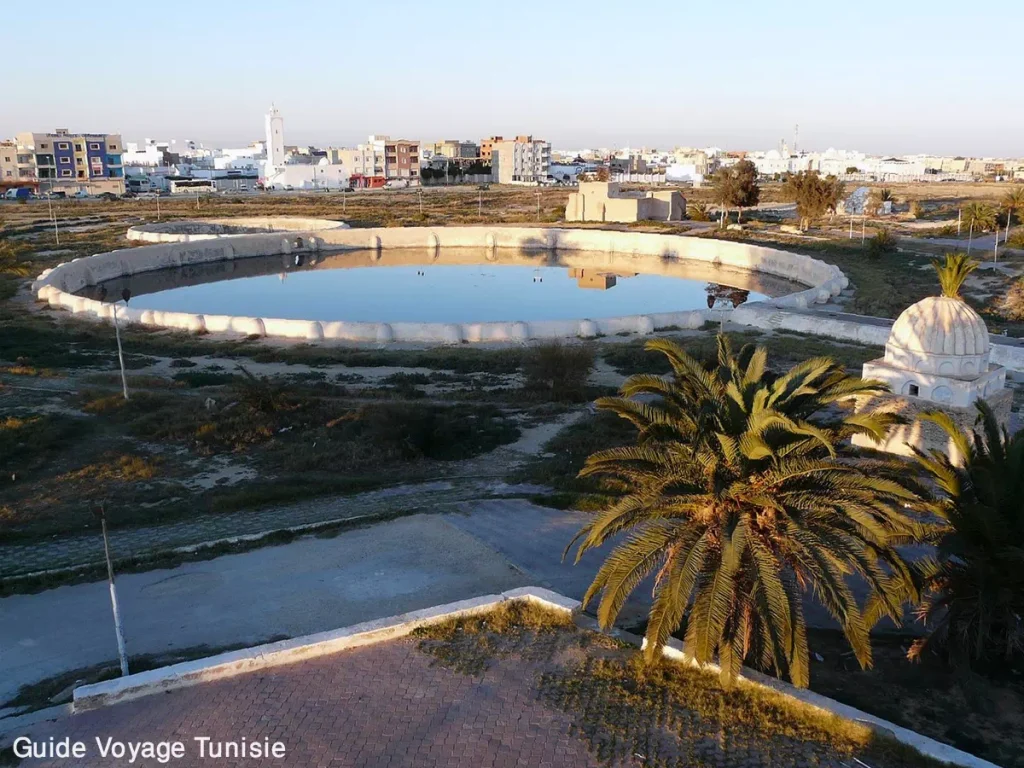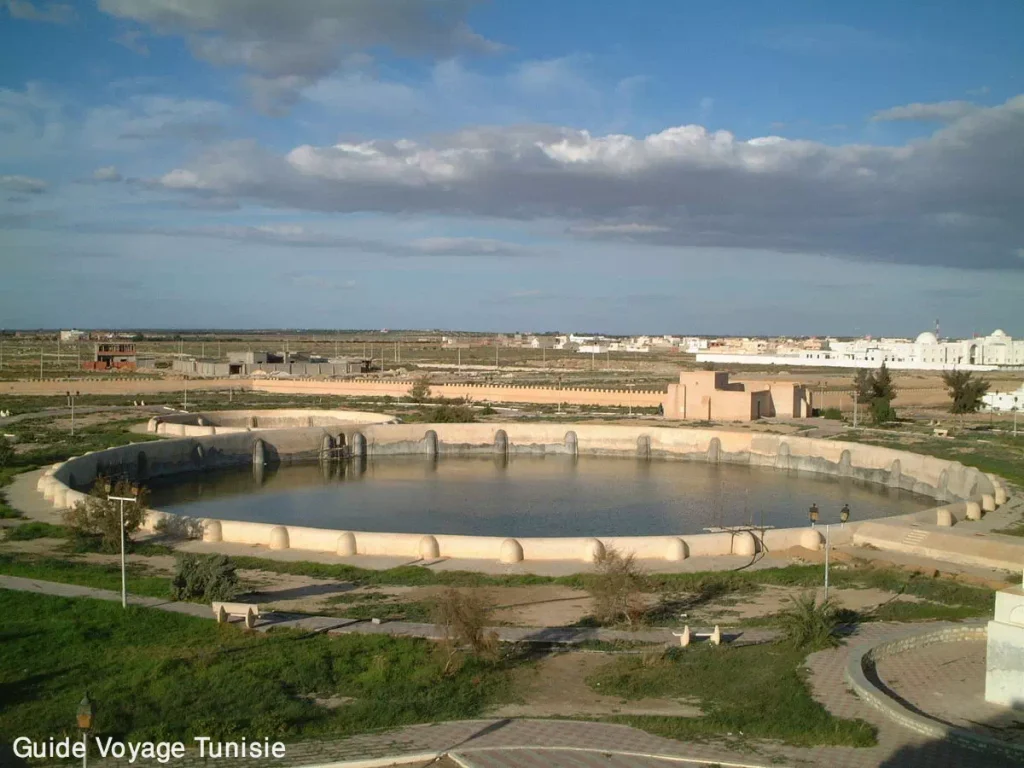The Aghlabid basins
The Aghlabid basins are a Tunisian historical monument located in Kairouan.
Dating from the beginning of the second half of the 9th century and located outside the ramparts of the medina of Kairouan, they are considered to be the most important hydraulic structures in the history of the Muslim world.
Built around 860-862, during the reign of the Aghlabid sovereign Abu Ibrahim Ahmed Ibn Mohamed Ibn Al Aghlab (856-863), they were then part of about fifteen extra-mural basins intended to supply the city with water.
The magnitude and ingenuity of this achievement have always commanded the admiration of travelers and earned Kairouan the name of “city of cisterns”.
Originally, the supply of the basins was ensured by a clever drainage system bringing rainwater as well as that of the tributaries of the Merguellil wadi collected via small dams. Thereafter, the construction by the Fatimid sovereign Al-Muizz li-Dîn Allah of an aqueduct (around 961), brings water from the sources of Cherichira, a locality located 40 kilometers from Kairouan.
The work, made of rubble covered with a waterproof coating, covering an area of 11,000 m2, consists of a small settling basin, a large basin for storing water and two water cisterns, all with a total storage capacity of 68,800 m3.
The small basin, of simple polygonal shape with 17 sides, with an internal diameter of 37.40 meters and a capacity of 4,000 m3, is consolidated by 17 internal and 28 external buttresses. It serves as a settling basin where the water is cleared of debris and impurities before passing into the large basin.
The latter, a vast polygon of 64 sides with a perimeter of 405 meters and a capacity of 57,764 m3, measures 129.67 meters in internal diameter and 4.8 meters deep. The durability of this basin as well as the control of the water pressure exerted on its walls, required no less than 182 buttresses (118 outside and 64 inside) to support and reinforce it. The two water cisterns, with a capacity of 917 m32, are leaned perpendicularly to the basins and are covered with barrel vaults with transverse arches resting on pillars.
The monument, originally designed for the water supply of the townspeople of Kairouan, was sometimes used by the Aghlabid princes, notably during the reign of Ziadet Allah III, as a place of pleasure and entertainment. In the middle of the large basin rises a multi-lobed pillar which was once surmounted by a kiosk. In addition to its utilitarian aspect, the work also fascinates with its aesthetics deemed both sober and majestic.
The Aghlabid basins in pictures

